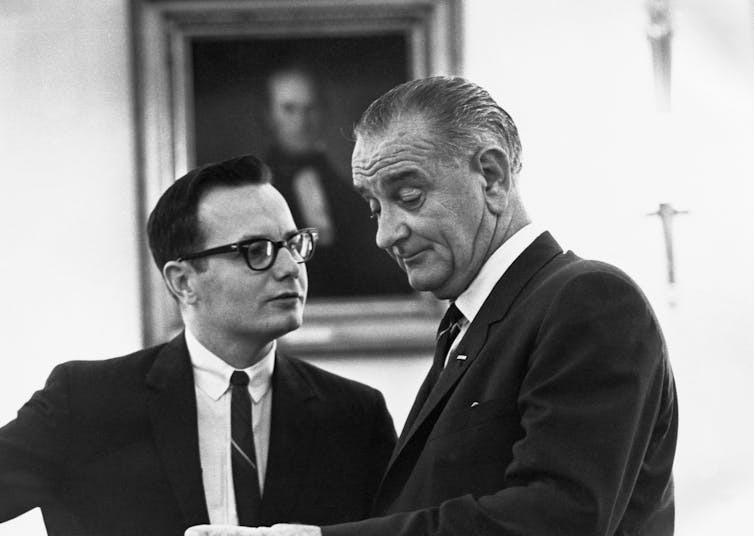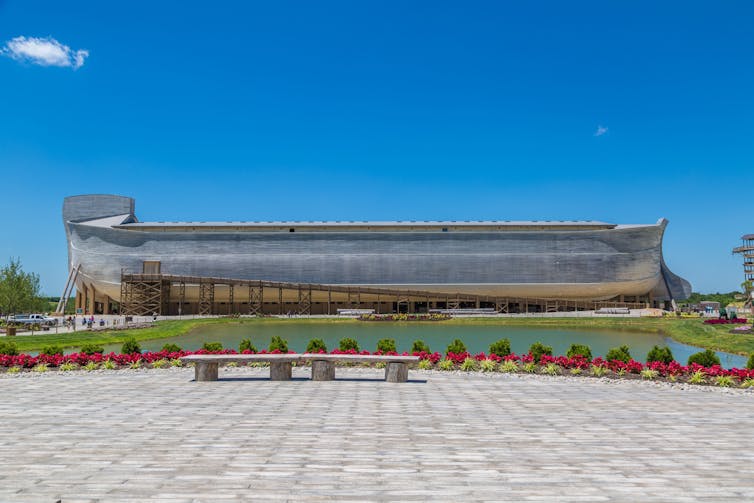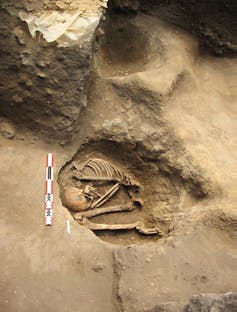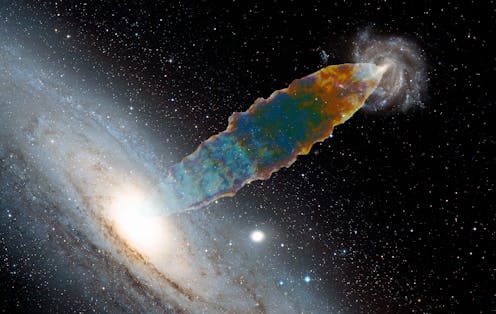Source: The Conversation – France (in French) – By Jean-Paul Pollin, Professeur émerite d’économie et de finance, Université d’Orléans
Les banques centrales sont incitées à prendre des décisions dont les motifs dépassent leurs objectifs traditionnels de stabilité des prix et des systèmes financiers. Mais en ont-elles la légitimité ? Cela ne risque-t-il pas d’affecter leur indépendance ? Ne faudrait-il pas alors engager une révision de leurs missions ?
Cet article est publié dans le cadre du partenariat les Rencontres économiques d’Aix–The Conversation. L’édition 2025 de cet événement a pour thème « Affronter le choc des réalités ».
On résume trop souvent les missions des banques centrales au maintien de la stabilité des prix, d’une part, et à la stabilité du système bancaire, d’autre part. Mais, en réalité, selon les mandats qui leur sont assignés et/ou selon la façon dont elles les interprètent, le champ de ces missions est généralement bien plus vaste.
Ainsi, la Fed est investie d’un « double mandat » : la stabilité des prix et niveau d’emploi maximum. D’autres banques centrales (dans des pays en développement) ont pour mission de stabiliser la parité de leur monnaie avec celle d’une devise étrangère… La Banque centrale européenne (BCE), de son côté, est censée, sans préjudice de l’objectif de prix, apporter un soutien aux politiques générales « en vue de contribuer aux objectifs de la Communauté ». Ce qui constitue un ensemble de missions potentiellement très (trop ?) large.
Par ailleurs, pour répondre aux crises qui se sont succédé, au cours des vingt dernières années, les autorités monétaires ont su modifier l’ordre de priorité de leurs missions et, parfois, en étendre le champ. Durant les crises financière puis sanitaire, elles ont accompagné les politiques budgétaires pour soutenir l’activité, mais aussi pour limiter le coût de l’endettement public en achetant massivement des titres de dettes publiques (des politiques dites non conventionnelles). Elles ont alors pris le risque d’accepter une « dominance budgétaire ». Ce qui a pu leur être reproché.
À lire aussi :
Quand les banques centrales s’emparent de la question du climat
Une liberté limitée
Mais ces observations ne signifient pas que les banques centrales ont toute liberté pour interpréter ou même compléter les termes de leurs mandats. Car l’aménagement de leurs missions se heurte au moins à deux contraintes majeures :
-
D’une part, on sait qu’il est sous-optimal de poursuivre plus d’objectifs que l’on a d’instruments (règle de Tinbergen). Or, même si les banques centrales peuvent (à la marge et si cela est pertinent) augmenter la gamme de leurs instruments, leur nombre est fatalement limité.
-
D’autre part, lorsque la politique monétaire pénètre dans un domaine qui relève aussi de la compétence d’autres volets des politiques économiques (par exemple, la politique budgétaire, industrielle ou sociale…), la coordination que cela suppose peut mettre en danger son indépendance et, donc, la crédibilité de ses objectifs censés orienter les anticipations des agents. Car toute collaboration avec d’autres décideurs (des agences ou le politique) ouvre l’éventualité de concessions susceptibles de dévier par rapport aux annonces. À cela s’ajoute le fait que l’indépendance en question met en cause la légitimité des autorités monétaires à prendre des décisions qui supposent des choix de nature politique, qui affectent par exemple la distribution des revenus ou des richesses. Peut-on, dès lors, laisser les banques centrales mener des politiques dérogeant à ce principe ? Notamment des politiques sélectives.
Aller au-delà de la régulation conjoncturelle ?
Comme bien d’autres institutions, les banques centrales ont été interpellées par la montée des désordres environnementaux et en particulier par leur probable influence sur la stabilité des systèmes financiers. Mais les réactions des autorités monétaires à cette sollicitation ont été divergentes voire discordantes : Jerome Powell (Fed), par exemple, a répondu que la Fed n’était pas un « climate policymaker »
Du lundi au vendredi + le dimanche, recevez gratuitement les analyses et décryptages de nos experts pour un autre regard sur l’actualité. Abonnez-vous dès aujourd’hui !
Il n’empêche qu’en 2017, s’est constitué un réseau comprenant des banques centrales et des régulateurs, Network for Greening the Financial System, qui compte aujourd’hui 145 membres, afin d’étudier et de suggérer des solutions à cette question qui devrait devenir cruciale dans les années à venir. Il en ressort notamment des propositions visant à renforcer les réglementations prudentielles pour prendre explicitement en compte les risques portés par les actifs détenus par les institutions financières qui sont la contrepartie de financements d’investissements contribuant aux déséquilibres écologiques dits « investissements bruns ». Ce qui est théoriquement tout à fait justifié, même si la mise en pratique de cette idée est compliquée et prendra sans doute du temps.
Par ailleurs, certaines banques centrales se sont engagées dans des refinancements privilégiés pour les « actifs verts » (c’est-à-dire compatibles avec la transition écologique) et, plus généralement, dans le « verdissement » de leur bilan. Il s’agit alors d’une sorte de retour à une politique de crédit sélective du type de celles qui avaient été pratiquées dans l’après-guerre, avant d’être balayée par la vague de libéralisation financière des années 1970-1980. On a alors considéré que les banques centrales ne devaient pas contrarier le rôle des marchés dans l’allocation des capitaux et donc ne pas intervenir dans la formation des structures par terme et par niveaux de risque des taux d’intérêt. On se situe par conséquent ici aux limites, évoquées précédemment, des révisions envisageables.
L’écueil des chocs d’offre
De façon plus générale, il est vraisemblable que, dans les années qui viennent, les politiques économiques vont se trouver davantage confrontées à des problèmes de régulation de l’offre plutôt que de la demande. Parce qu’il leur faudra principalement répondre aux chocs sur les conditions de production que vont entraîner les évolutions technologiques, les ruptures et la recomposition des échanges commerciaux et des chaînes de valeur, les éventuelles pénuries de matières premières… Au cours des années récentes, c’est bien à ce type de problèmes que les politiques conjoncturelles ont été confrontées : la crise sanitaire a provoqué une contraction de la production, puis des ruptures d’approvisionnement. Elle a été suivie du déclenchement de conflits armés occasionnant, entre autres, une hausse des prix de l’énergie et donnant lieu à un brusque retour de l’inflation.
Or, on sait que les politiques monétaires conventionnelles sont démunies pour répondre à des chocs d’offre, car dans ce cas l’ajustement des taux d’intérêt ne peut assurer à la fois la stabilité des prix et celle de l’activité. C’est d’ailleurs pourquoi plusieurs banques centrales ont souhaité flexibiliser leur objectif d’inflation en allongeant l’horizon de son calcul, en l’inscrivant dans une marge de fluctuation…
Au demeurant ces chocs d’offre génèrent des déséquilibres de caractère micro ou méso-économiques qui relèvent plutôt d’une politique du crédit apte à rétablir la compétitivité de la structure productive. Mais ceci nécessite alors une stratégie industrielle et des choix que des banques centrales indépendantes n’ont pas la légitimité (ni toutes les compétences) pour en décider. C’est, alors, qu’une coordination qu’une coordination entre les politiques économiques devient inévitable.
De nouvelles missions dans un système monétaire international en restructuration ?
D’un tout autre point de vue, ajoutons que nombre d’observateurs considèrent aujourd’hui que le dollar devrait perdre progressivement sa prédominance en tant que monnaie d’échange, de facturation et de réserve. La monnaie américaine tenait une place essentielle dans le système monétaire international qui avait été recomposé dans l’immédiat après-guerre. Mais cette place a été remise en cause par la fracturation, qui s’accélère, de cet ordre économique mondial, par la baisse du poids relatif de l’économie américaine et sans doute aussi par le fait que les États-Unis se sont affranchis des responsabilités qu’impliquait le « privilège exorbitant » dont bénéficie leur devise.
Dans le monde multipolaire qui semble se mettre en place, il serait juste et cohérent que d’autres monnaies, notamment l’euro et le yuan chinois, se substituent en partie à la monnaie américaine. C’est du reste une revendication ancienne de nombre de pays émergents, les BRICS+.
Ceci représenterait pour les monnaies considérées une « captation de privilège », mais imposerait aussi de nouvelles obligations. Il faudra faire en sorte que la parité de ces monnaies soit assez stable, libéraliser (en Chine) les mouvements de capitaux, introduire des monnaies numériques de banques centrales pour faciliter et réduire les coûts des règlements transfrontières…
Mais, aussi et surtout, assurer le développement de marchés financiers profonds et liquides, afin de rendre attractive la détention à l’étranger d’actifs émis dans les pays considérés. Ces exigences impacteront sans doute les missions des banques centrales, mais elles vont bien au-delà. Par exemple, la nécessité de conforter l’offre de placements suppose, en Europe, une unification des marchés de capitaux ainsi qu’une uniformisation des dettes publiques émises par les différents États de la zone. Ce qui renvoie à des initiatives que la banque centrale peut suggérer et accompagner, mais dont elle ne peut pas décider du fait de leur dimension politique.
Cet article est publié dans le cadre d’un partenariat de The Conversation avec les Rencontres économiques, qui se tiennent du 3 au 5 juillet, à Aix-en-Provence. Plusieurs débats y seront consacrés au rôle des banques centrales.
![]()
Jean-Paul Pollin ne travaille pas, ne conseille pas, ne possède pas de parts, ne reçoit pas de fonds d’une organisation qui pourrait tirer profit de cet article, et n’a déclaré aucune autre affiliation que son organisme de recherche.
– ref. Faut-il réviser les missions des banques centrales ? – https://theconversation.com/faut-il-reviser-les-missions-des-banques-centrales-259461




















